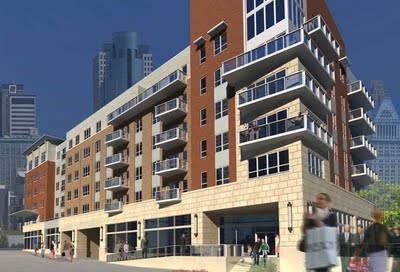If you’ve ever watched Sex and the City, you can’t help but take note of the moments when Carrie is walking to and from her Upper East Side apartment. If you’re like me you might think ‘now that is a neighborhood I would love to live in.’ The intimate narrow streets, beautiful human scaled buildings, and fully developed tree canopies scream ‘sense of place’ in ways that make you want to pack up your bags and move to New York yesterday. Well the truth of the matter is Carrie’s neighborhood was actually shot on Perry Street in Greenwich Village, a neighborhood known the world over for its unique attractions, high densities and great streets. Show producers knew selling the ‘city’ was just as important as selling Carrie, explaining the Upper East Side white lie and the choice of Greenwich Village to showcase the image they were selling.
So what makes Greenwich Village so great – why shoot a show about being single and fabulous in New York City in this neighborhood? The answer is simple: the neighborhood is a vibrant urban neighborhood ideal for the human experience due to its built form, narrow streets, vertically oriented structures of varying ages, and pedestrian scaled commercial districts.  And while much of Greenwich Village was developed in the 19th Century, it is these urban forms that we ought to be looking at for inspiration and replicating in 21st Century urban infill projects. To be fair, we have made great strides in building urban forms in our urban environments over the past 30 years, but judging by recent projects like The Banks in Cincinnati and North-of-South in Indianapolis, we aren’t quite Greenwich great.
Infill or new developments in today’s urban realm are achieving a lot of positive designs. As showcased in North-of-South, seen in the first image below, and The Banks, seen in the second image below, there is an understanding that urban buildings should interact with the public realm and directly abut the sidewalk, feature ground level retail and other activation uses, and include office, residential, or other mixed uses above. These are very important components to creating and maintaining an active, vibrant urban neighborhood as seen in Greenwich Village. Unfortunately, another critical factor still seems missing from new developments, something that can ultimately make or break the long-term success of the buildings and their form.


When you watch Carrie gallivant around her New York neighborhood in Sex, you notice a variety in building shapes, sizes, and age. Having a diverse building stock is important to maintaining vibrancy and diversity in a community over the long-term because it allows for diverse users, diverse price points on apartments and condos, and flexibility for diverse uses as consumer needs and demands change. The Banks and North-of-South will not be able to achieve this level of diversity because the buildings have been developed as a superblock and are oriented horizontally instead of vertically. This creates monotonous urban forms and diminishes use flexibility and thus diversity. Over time, these developments will likely become as homogenous in use as they are in vertical form, killing diversity and vitality in its wake. Simply put, these developments could prove unsustainable in the long-term.
To achieve long-term sustainable urban forms and neighborhoods, we ought to be developing infill and new urban projects parcel by parcel, plot by plot. Too often, an ‘all-or-nothing’ approach is  taken with new projects and if the entire development cannot be financed and built at once then nothing happens at all. This can result in large blocks of prime urban land sitting vacant for years on end (see Cincinnati’s riverfront from 2000-2009 or Indianapolis’s old Market Square Arena site at present.)
An alternative to this ‘all-or-nothing’ approach is to split developable land up into urban, human scaled plots and let the market dictate when and how they will be developed. Some regulations and plans would have to be developed and enforced to ensure urban areas aren’t stuck with tacky architecture or varying setbacks but even these plans should be reviewed and changed every five years or so. By doing this, cities can more easily achieve diversity in urban forms and uses that are human experience oriented and thus more sustainable for long-term neighborhood stability. Only then will the 21st Century urban developments be able to achieve Greenwich greatness as shown on episode after episode of the great show Sex and the City.

What sort of policy changes could promote a different style of development? Would you say that the issue is a result of developers wanting a quick payoff by building large scale projects?
I think the point you make is a good one: that there is massive block-size infill, and there is lot-by-lot pedestrian-scaled infill. The later makes me think of your reference to Greenwich Village or a neighborhood like Old Town, Chicago. The problem with replatting these vacant lots is that you greatly reduce the likelyhood that they’ll be developed. I think the more likely solution is having very well-written anti-monotony codes that essentially make each individual dwelling or commerical unit so architecturally different from the next that the pedestrian doesn’t notice the singular development.
I never knew that Carrie’s Upper East Site apartment was actually in Greenwich Village! I feel so cheated right now!